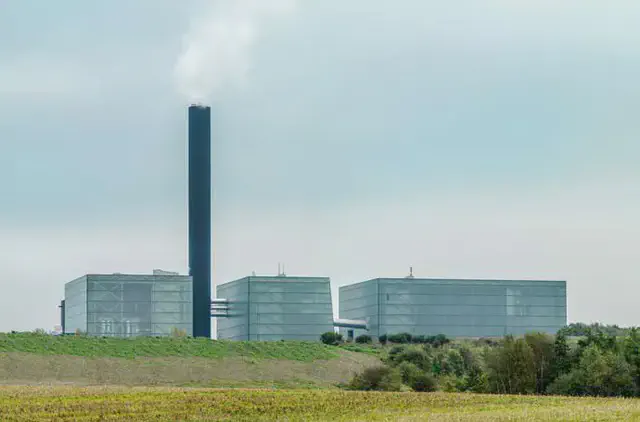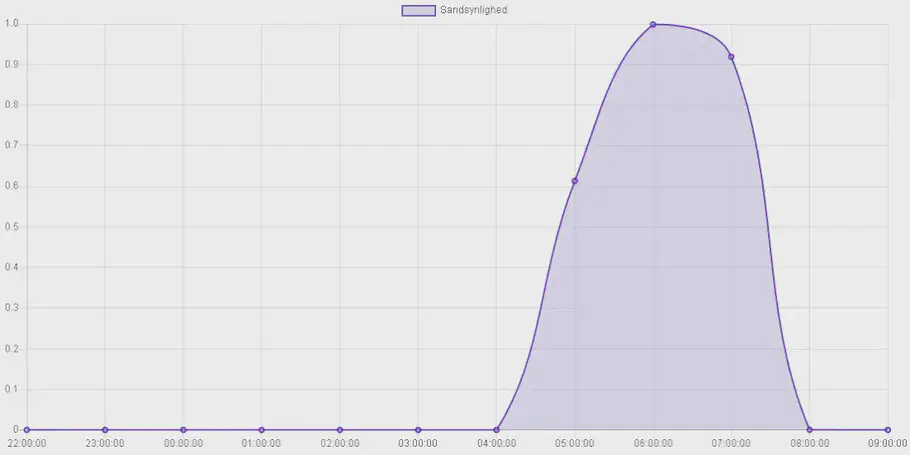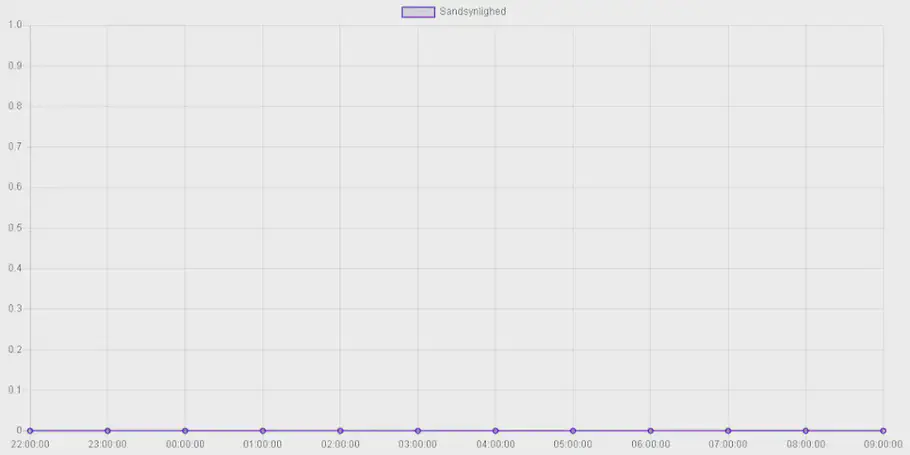Together with Kredsløb we have created a data-driven solution for detecting challenges due to too low energy and temperature in their transmission system. This solution enables Kredsløb to ensure the supply while running lower temperatures in their transmission in turn ensuring an economic and green supply.
Facts about Kredsløb
Kredsløb A/S, formerly known as AffaldVarme Aarhus A/S, consists of both district heating production, recycling, and energy production. Kredsløb has an annual revenue of DKK 3 billion, employs 400 people, has a network for district heating with more than 2,000 km of pipe, and delivers heat to close to 300,000 citizens each day. This makes Kredsløb one of the biggest within district heating in Denmark.The journey started with an AI Camp from Neurospace of which Kredsløb got insight on the possibilities with machine learning, and together with Neurospace selected this particular challenge to work on as a pilot project. A pilot project is a natural step after the AI Camp. It is a well-defined problem which we aim to prove can be solved by using data and machine learning.
“Kredsløb always seeks new ways to look into the future” explains Jens Rishøj Skov and continues: “This is the reason we started a machine learning project together with Neurospace.”
Today Kredsløb uses different tools to look into the future such as weather forecasts, hydraulic models, fuel price prognosis, and energy statistics.
“To create a tool based on machine learning which constantly surveil our system and can help spot when something differs from the normal would be very helpful to us.” says Jens Rishøj Skov.
Virtual Team and Scrum
By doing sprints and performing tasks in iterations of two weeks the project was finished in a short amount of time. I really liked the planning part where we assigned tasks for us and Neurospace which created a good overview throughout the process.
John Helligsø
Kredsløb A/S
Throughout the pilot project Kredsløb and Neurospace have been working together in a virtual team. The virtual team is a construct where, for an amount of time, Kredsløb and Neurospace have a collaborative team focusing on the pilot project.
We do this to ensure that domain knowledge and data knowledge meet in a team which has focus on the task at hand. Further, it ensures that Kredsløb is part of the process, creates ownership, and ensures that they can manage the solution when it is done. The virtual team has been running Scrum which uses sprints to plan and execute. A sprint is a two week iteration where the team analyses, builds and tests something that can bring value on its own towards a solution. Working with two weeks’ iteration together with Neurospace has also given Kredsløb the opportunity to pause for a sprint. Kredsløb did this when they were interrupted due to conferences, education, and in general had a busy period where Neurospace was awaiting some decisions in the project. We then rebooted the sprints two weeks later where everybody had time to focus on the project.
The objective with Scrum is to deliver value each sprint. Thus giving Kredsløb new insights throughout the process and be a part of it. This has given Kredsløb the opportunity to better understand how software solutions involving machine learning works and the importance of choosing the right data for the given problem.
John Helligsø has been a part of the virtual team from the beginning and is also part of the master watchman crew running Kredsløb’ heat distribution. We talked to John Helligsø to hear about how it was to work with Scrum and in sprints: “By doing sprints and performing tasks in iterations of two weeks the project was finished in a short amount of time. I really liked the planning part where we assigned tasks for us and Neurospace which created a good overview throughout the process."
The project challenge
Many district heating companies use forecasting of heat consumption. Some companies use simulation tools to do forecasts, others have forecasting models which use data including the weather to try and predict the demand. These types of forecasts are often done for a 5-7 day period.
District heating is often looked at as a static system and this is correct for the most part but as Jens Rishøj Skov says:
“One example where our system is not static is our heat producer which we rely on to deliver a continuous energy and temperature. But they can variate 5-10% in their output and there are sometimes failures. This means that our hydraulics are constantly changing and because of different temperatures from the heat producers there is a variation in energy but also mixing temperature.”
But not only heat producers creates uncertainty in the transmission network:
“Another example is that our weather prognosis is 5-10% unreliable. From north to south our water retention in the pipes are 6-14 hours depending on flow which means that we always need to be one step ahead and if the prognosis is wrong we cannot catch up.” says Jens Rishøj Skov and continues:
“These uncertainties are why it is important for us to continuously surveil if something differs from the normal so we can act in advance to ensure a reliable supply.”

Kredsløb, Lisbjerg Plant. Photo: Kredsløb
This is why Neurospace together with Kredsløb have created a prototype that can act as a watchdog looking continuously at the data in real time to ensure that there is a high enough temperature and energy in the transmission system to ensure a reliable supply. This creates a safe guard for experimentation which amongst other things can help the control room lower the temperature in the transmission network in turn creating a more cost efficient and green supply. To do a forecast 12 hours into the future is nearly impossible to do as a human due to the uncertainties such as heat producer and the weather, the amount of parameters to look at continuously, and the complexity of the pipe network. A machine learning model does not have the same barriers as a human and can look at as many parameters as we need in real time and do forecasts based on these.
The Pilot Project
The biggest surprise we got was when we together with Neurospace found that the original situation we wanted to look for was not as big a challenge as we thought but together we found other places in our transmission system where we had challenges which are important to be aware of.
John Helligsø
Kredsløb A/S
42 features were chosen for the initial analysis based on the knowledge Kredsløb have about their hydraulic system. Based on descriptive statistics, feature importance, and trend and seasonality analysis, the amount of features used for the final model was reduced to 14. These 14 features from different locations in Kredsløb’ transmission system can tell if there is a problem with too low temperature and energy 12 hours in advance.
“Our transmission system is complex and we have had a hard time figuring out which data we could use as markers for the situation which we wanted to be aware of.” explains John Helligsø and continues “The biggest surprise we got was when we together with Neurospace found that the original situation we wanted to look for was not as big a challenge as we thought but together we found other places in our transmission system where we had challenges which are important to be aware of.”
The analysis throughout the project and the current prototype system help Kredsløb monitor and be alerted of unwanted situations in remote sections of their transmission system.
Now they know which markers are important to predict critical situations and have a system which can make predictions 12 hours in advance. The prototype system is a web solution with an easy to navigate dashboard showing the probability for challenges 12 hours in advance in the southern part of their transmission system. We do this by looking at 14 features for the past 72 hours and predict the next 12 hours. The probability will be between 0 which means everything is okay and 1 where there is a problem which the watchman needs to look at.
The figure shows how the dashboard looks like when it spots a critical situation. This was done with test data to show that the model can spot these types of situations.
The objective is that the solution will run in the control room, alert through the SCADA system, and create transparency about unwanted situations.
The system is designed to act as a watchdog constantly looking through the data in real time to predict unwanted situations in part of their transmission system and alert the staff.
This enables Kredsløb to ensure the supply while running an economic and green district heating for the benefit of all their consumers.
However, due to a mild winter this year the model has not yet proven to work in production.
John Helligsø notes that: “What we really need now is a good and cold winter to see that the model really holds. But though we are skilled, there are some things we cannot control, namely the weather!”
Throughout the process Kredsløb and Neurospace have had focus on continuously learning together.
John Helligsø notes that: “Throughout the process we have learned that even though we are good at SCADA our data and the way we share it in the cloud is not as good as we want it to be. Together with Neurospace we are working on getting this fixed so we can be more efficient in the future”.
We are currently collaborating with Kredsløb about their data journey and helping them along the way. The next step is to work together to fine-tune the prototype and put it into production so that it can detect unwanted situations and ensure a green and reliable supply.
If you are interested in hearing more about what we do together with our customers please contact us.

